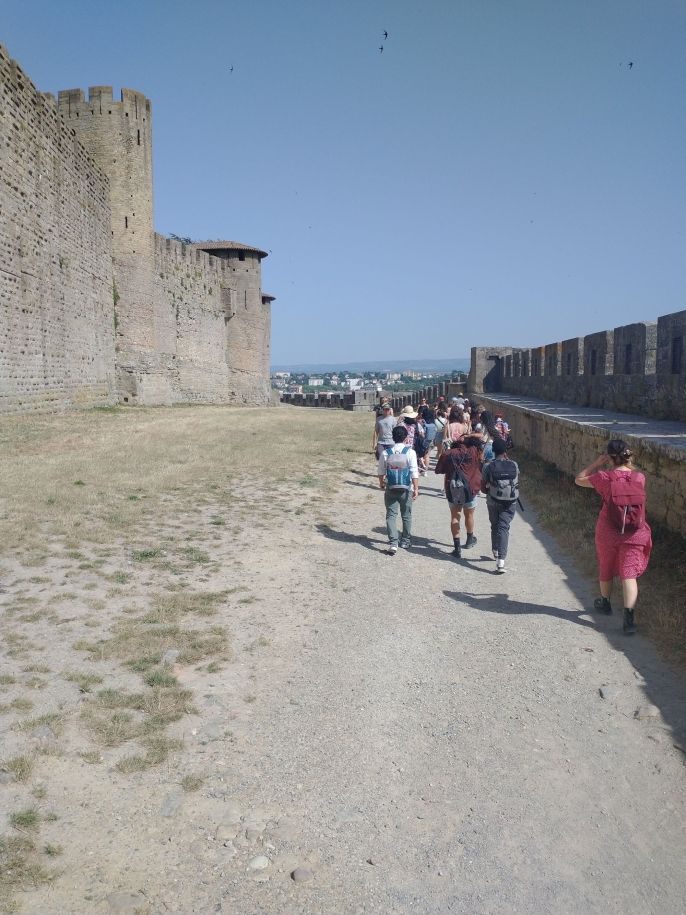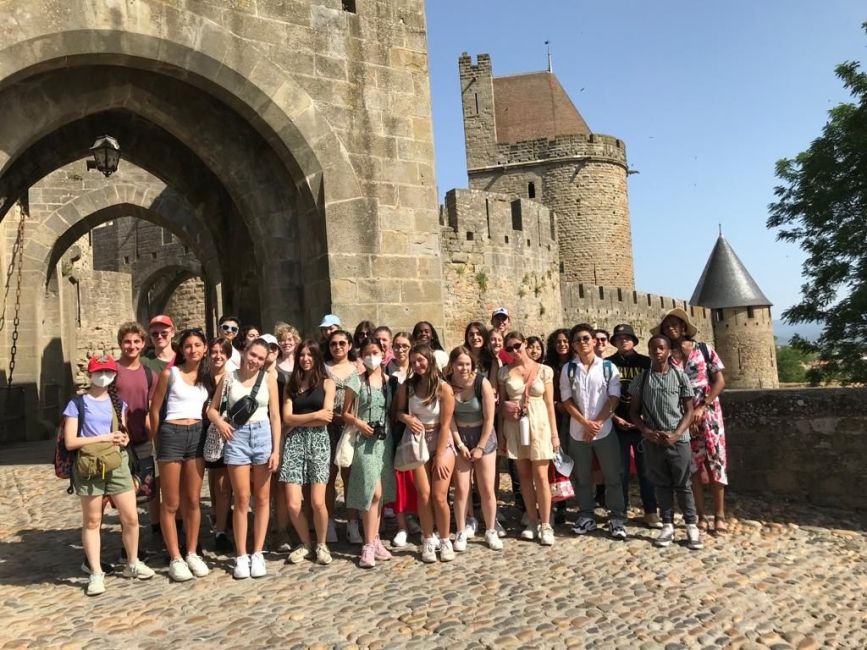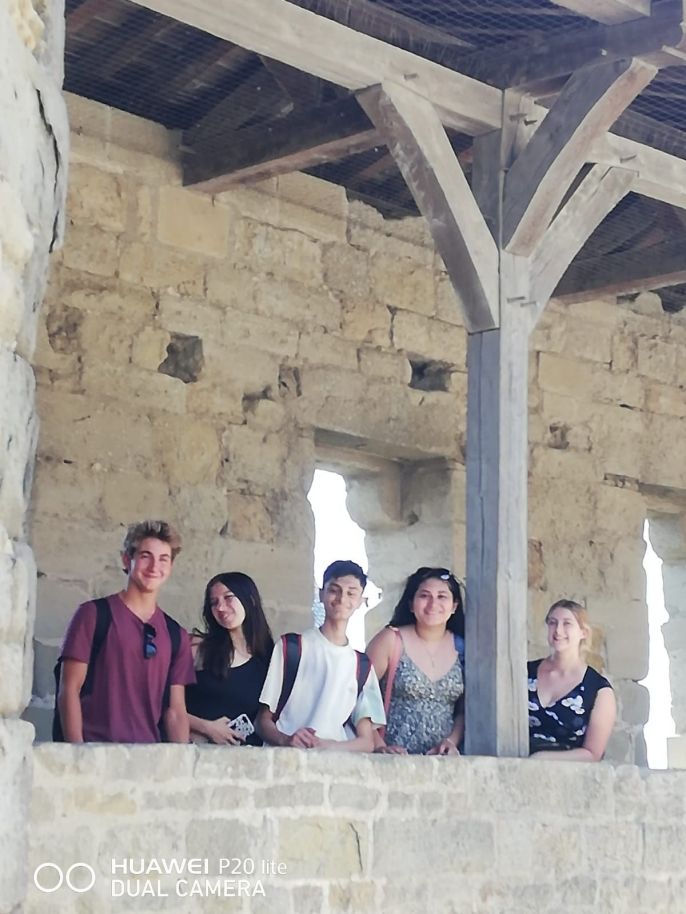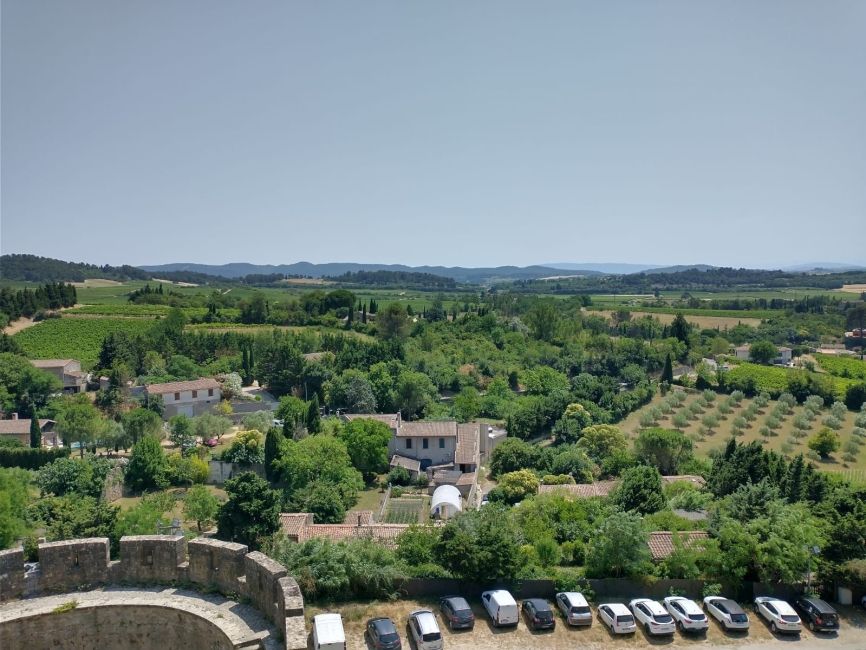Carcassonne: Visit of a 2000-Year-Old City
In their first weekend in France, the students split up into two different excursions which will be mirrored in week 3. One of the two excursions was a day trip to Carcassonne, a city nearly 100 kilometers southeast of Toulouse that was first settled over 5000 years ago. It grew in importance when the Romans inhabited the area in the first century AD and again in the middle ages when it housed the region's cathedral and was a strategic military asset due to its strong fortifications and hilltop location. For students, this was an opportunity to experience the millennia of history that can be explored in this region and get some wonderful views of the countryside around Toulouse. We began with our tour of the city's famous fortified walls.
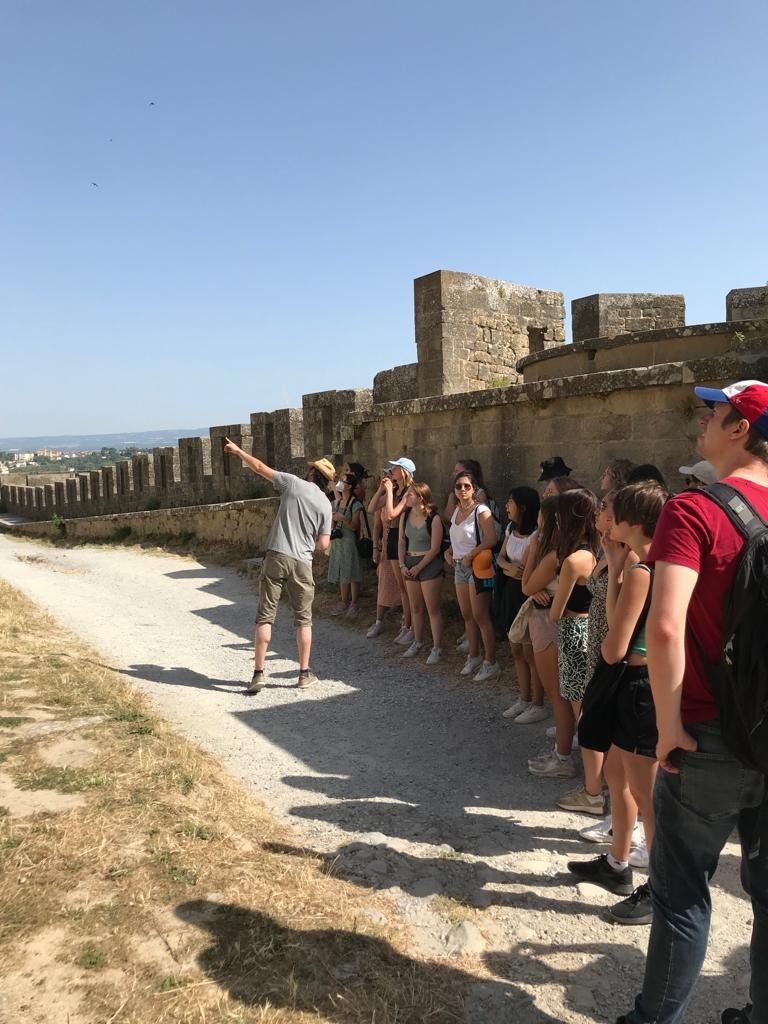
We met our guide outside the front gate and our introduction to the city was to its two layers of massive walls. These walls were the main fortification at the time and included several features that aided in the defense of the city like small slits through which archers could fire their arrows. As we examined the wall, students picked out three distinct patterns. First, a series of small uneven stones is generally a part of the wall from the Gallo-Roman era between the first and third centuries AD. The amount of the original wall that stood from nearly 2000 years ago was astounding. They also used red brick for some of their towers. Next, there were larger, but still not uniform stones that were generally placed either for renovations or to raise the walls in the Middle Ages. Finally, we saw the large, uniform stones that we are accustomed to that were added during renovations in the 19th century.
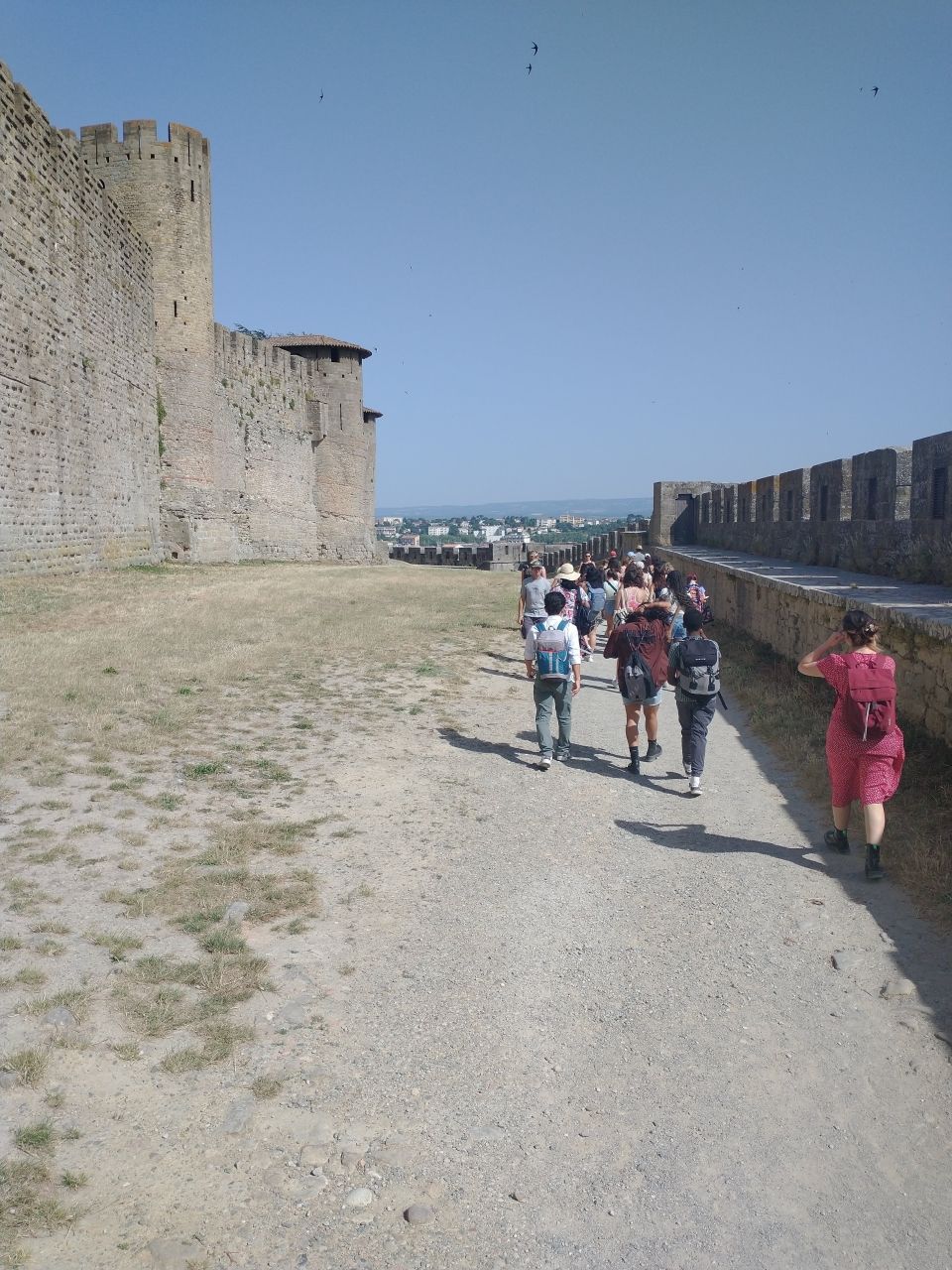
Next, we entered one of the four city doors and examined the interior defenses of the castle itself. Because it sits on top of a hill, the dug out area you see in the picture below wouldn't be filled with water, but with spiny brambles to keep unwanted intruders at bay. We also observed some of the first known examples of the use of "hoardings", wooden structures fitted on top of the walls that served to not only prevent scaling of the wall, but also provide a means for firing downward towards attackers at the base of the wall.

Finally, we went to the old cathedral. While it's no longer the cathedral of the region, it's still a basilica that was granted this special historical status by the Pope in 1898. The stained glass that you see in the photo is from the 19th century, but just behind the pulpit is original glass from the 14th century flanked by two more installations from the 15th century. The basilica is still functioning and holds mass, weddings, and other occasional events.

After our guided tour and a bit of time for lunch, it was time to walk through the chateau which included both a museum of original artifacts from the various era's of the city's history and a scenic walk of the castle walls giving vistas of the French countryside.


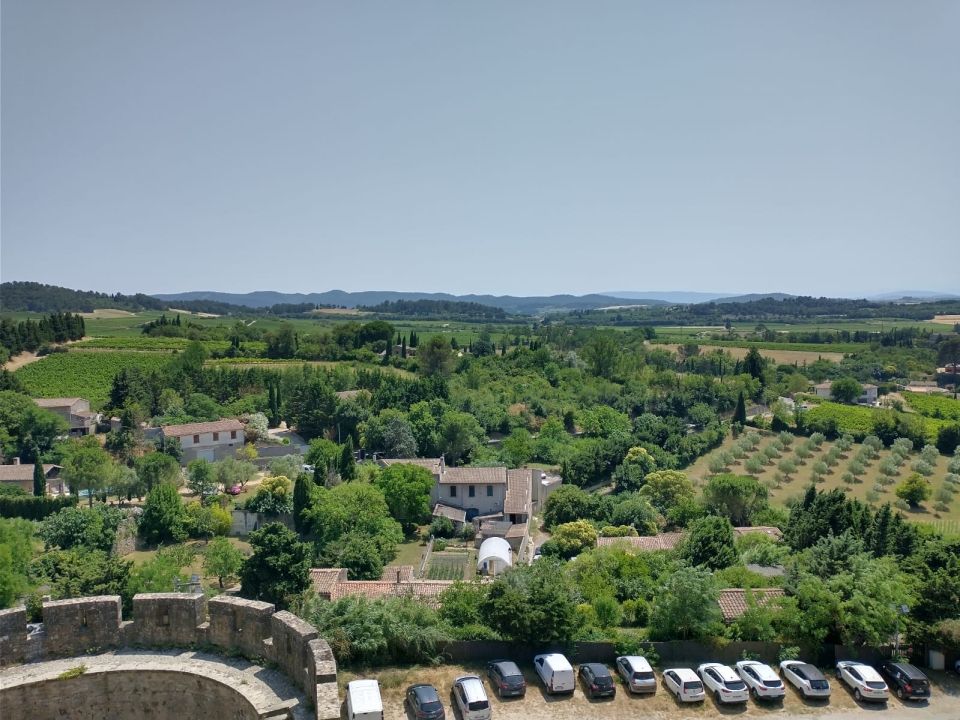
And just like that the visit was over! Rest assured, if you or your child didn't get to go to Carcassonne this weekend, they'll get to in week 3! For now, it's time for the students to prepare for their second week of classes, afternoon cultural activites, and host family meals!

Related Posts
Pot de départ: À bientôt!
After four eventful weeks, our Global Navigators have "mixed feelings" about parting ways. It can be difficult to switch back to everyday life after such a transformational experience. As highlighted... keep reading

A visit to the past
This week, students spent time visiting the medieval fortified city of Carcassonne.

Atelier Pâtisserie!
Students braved high temperatures this week and got to brush up on their culinary skills during a pastry workshop! They worked in small groups to create a variety of French... keep reading


